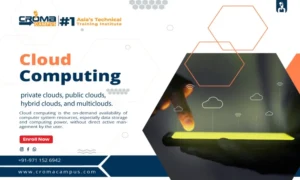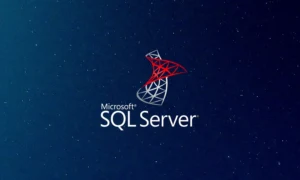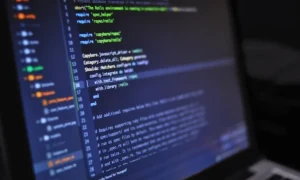Computer programming is an essential skill to possess in today’s digital world. It is the foundation of modern computing, allowing people to create and manipulate data, solve problems, and automate processes with precision and efficiency.
In this comprehensive guide, we will explore the fundamentals of computer programming as well as more advanced topics such as distributed systems and artificial intelligence.
This guide is designed to provide a thorough introduction to the craft of computer programming for both novice and experienced developers alike.
Foundations of computer programming
Computer programming is an essential skill for anyone looking to create and manipulate data, solve problems, and automate processes with precision and efficiency.
Before diving into the details of specific programming languages and platforms, it’s important to understand the fundamentals of computer programming.
This guide covers the foundations of computer programming in detail, including an introduction to computer hardware and software.
Benefits and limitations of different programming languages, basics of algorithms and program flow, understanding data types, variables, functions, as well as memory management techniques.
When it comes to understanding basic computer hardware and software concepts, it is important to be familiar with the fundamental components that make up a computer system.
This includes components like processors (CPUs), memory (RAM), storage (hard drives) as well as input/output devices such as keyboards, mice or touch screens which allow users to interact with the system.
Understanding these components allows developers to optimize their code for maximum performance on any given device.
There are many different programming languages available today which have various strengths and weaknesses.
Some popular choices include Python for its ease-of-use; Java for its scalability across platforms; C/C++ for its speed; JavaScript for its ubiquity on web browsers; SQL for managing databases;
R for statistical computing; Swift or Objective-C for Apple mobile development; GoLang or Rust for server applications; SwiftUI or Flutter for UI design; React Native or Ionic Framework for cross-platform mobile development; MATLAB or Julia for scientific computing.
Just to name a few! Each language has its own set of benefits and limitations that must be taken into account when choosing a language suitable for your project’s needs.
When writing code in any language, you will need to understand basic principles such as algorithms & program flow to ensure your instructions are executed correctly by the processor.
Algorithms are essentially step-by-step processes that can be used to solve complex problems using simple instructions stored in sequential order.
Program flow refers to how these instructions are executed: either sequentially from top-to-bottom (linear) or according to certain conditions (conditional).
Understanding how algorithms & program flow work will help you develop efficient solutions while avoiding common mistakes when writing your code.
Programming languages and platforms
Programming languages and platforms are the tools of the trade for computer programmers.
With a virtually limitless range of programming languages available, it can be difficult to know which one to use for a particular task.
This section will provide an overview of popular programming languages and platforms, as well as their strengths and weaknesses.
Java is one of the most popular programming languages in the world, and is used in a wide variety of applications.
It is known for its high performance and scalability, making it an ideal language for enterprise-level software development.
Java also has a large number of libraries available, making it easy to integrate with existing systems.
One downside of Java is its complexity – due to its verbose syntax and numerous frameworks, it can take longer to learn than some other languages.
Python is another widely-used language that is popular amongst developers due to its readability and ease-of-use. Its simple syntax makes it ideal for rapid prototyping or quickly solving small problems without having to write lengthy code blocks.
Python also has extensive libraries that allow developers to quickly access popular algorithms or data structures without having to implement them from scratch.
However, compared with other languages such as Java or C++, Python does not offer quite as much control over performance or memory usage – so if these factors are important then another language may be more suitable for your needs.
C# is Microsoft’s answer to Java – it shares many similarities but also offers additional features that make it attractive for enterprise development projects.
Such as LINQ support (Language Integrated Query) which allows queries on collections of objects using SQL-like syntax..NET Core also provides package management capabilities through NuGet which helps developers manage dependencies more efficiently than traditional approaches such as manually downloading dependency libraries from websites like GitHub or Maven Central repoistory.
The downside of C# is that it can be harder to debug than some other languages due to the extra layers of abstraction created by Visual Studio’s IDE (Integrated Development Environment).
Other popular programming platforms include Linux, Windows, distributed systems (such as Apache Spark), cloud computing (such as AWS), and virtual machines (VMs).
Each platform has its own strengths and weaknesses; Linux provides flexibility but may require more experience with command line tools while Windows provides an easier user interface but often requires additional licenses or fees.
When compared with Linux solutions; distributed systems provide massive scalability at the expense of increased complexity; cloud computing solutions provide elasticity but come with certain security risks;
Virtual machines are great for testing code before deployment but come with overhead costs in terms of RAM usage and processing power needed on the host machine.
Ultimately you must weigh up these pros & cons when selecting your platform based on what works best for you application needs!
Debugging and troubleshooting
Debugging and troubleshooting are essential skills for any computer programmer. Debugging is the process of identifying and resolving errors in a program, while troubleshooting involves diagnosing and solving more complex problems that are not easily identified.
When debugging, it is important to test your code thoroughly, as this will help you identify potential bugs and errors before they become too difficult to resolve.
You should also take advantage of debugging tools such as debuggers, which can provide valuable insight into how your program works. Additionally, unit testing frameworks such as JUnit or NUnit can be used to identify bugs early on in the development process.
For larger-scale issues, it is important to use a systematic approach when troubleshooting. This includes taking steps such as isolating the problem area, checking for known causes of the issue, and researching potential solutions online or in programming books or manuals.
Additionally, it may be useful to consult other programmers or technical support staff if necessary.
Once an issue has been identified and resolved, it is important to document all changes made so that future issues can be avoided or addressed more quickly.
It is also important to review source code regularly in order to identify any bugs that have been introduced due to recent changes or updates.
Finally, following best practices when coding helps prevent a lot of common mistakes from occurring in the first place.
Data structures and algorithms
Data structures and algorithms are the fundamental building blocks of computer programming. They provide a way to represent, store, and process data in a systematic way.
Data structures are used to organize information so that programs can quickly access and modify it.
Algorithms are sets of instructions used to solve problems or perform tasks.
Data structures come in many forms, including linked lists, stacks, queues, trees, graphs, and hash tables.
Each structure offers its own advantages and disadvantages depending on the type of data being stored and the operations being performed on it.
Linked lists offer fast insertion but slow search times; stacks provide fast access to elements at the top of the stack but require more memory space; trees offer faster search times but require more time for insertion; while hash tables offer fast lookups but require additional space for storing keys.
Algorithms allow computers to process data efficiently by performing calculations or operations on data in order to produce a desired result.
Common types of algorithms include sorting algorithms (such as bubble sort and quick sort), searching algorithms (such as linear search and binary search), pathfinding algorithms (such as A*), graph algorithms (such as depth-first search) and string manipulation algorithms (such as Knuth-Morris-Pratt).
Each type of algorithm has its own set of advantages and disadvantages depending on the task being solved or performed.








